Volatile compounds, or volatile organic compounds (VOCs) are ubiquitous. They are in plants, the air we breathe, everything we eat and drink, and every fluid and tissue in our body. Volatile compounds are used for either same-species or cross-species communication by plants, insects, bacteria, fungi and many mammals, fish and birds, and “terpene” has been described as “the world’s most spoken language”.
This article is about volatile compounds emitted by the human body, focussing on our unique fragrant signature, on body odor and deodorants, and on the diagnosis of disease based on the fragrant “signature” of breath, skin, urine or other excreta. In the context of this article, “volatilome” refers to the totality of volatile compounds that we emit and that is detectable to others. Most importantly, this includes those naturally found on our skin and our breath.
In real life, the volatilome of most humans also includes volatiles from any fragrant products used. The list is long – laundry detergents and fabric softeners for our clothes, shampoos and conditioners for our hair, body washes, soaps, cosmetics and every other kind of personal care product including deodorants and fragrances.
Our sense of smell
In the context of this article, it’s important to understand (a) that many people’s sense of smell is not optimal, and (b) that our smell perception of the same substance can be quite different. It will be useful to understand the following terms:
Anosmia
Total smell loss. This is generally due to one of three causes (1) Congenital, (2) from physical trauma to the head (3) from viral infection, such as flu or COVID-19.
Hyposmia
A generally reduced sense of smell. One way this often happens is with age.
Hyperosmia
An unusually acute sense of smell. Whether this is a disorder or a superpower is debatable.
Specific anosmia
Means that there are some substances to which an individual is “smell blind”. This is not only common, it’s believed to be universal, though it’s difficult to know what you are smell-blind to without some testing. Specific anosmias may partly explain our often very different smell preferences, and food preferences. Anosmia to a specific chemical is probably always genetic. We can only smell something if we possess the gene that expresses the olfactory receptor in our nose that reacts to that substance. As we will see, some people are anosmic to important components of human body odor.
Body odor and deodorants
Deodorants are a relatively modern invention. People have always washed for cleanliness, and fragrances have always been used in some form or another, often liberally, but deodorants and antiperspirants as we know them today are an invention that, initially, was not well received by Western society! It was only after a series of marketing campaigns, which subtly shamed women for perspiration, that the deodorant market gained traction in the USA, in around 1910. It was another 30 years or so before men could be equally, and successfully shamed. However, the situation in Asia is quite different, as we will see in a moment.
I’m not saying deodorants or antiperspirants are a bad thing; I’m saying that they have only recently become a cultural norm, and it’s noteworthy that the science is still evolving. We have known for years that malodorous volatiles are caused by certain bacteria (Corynebacteria, Cutibacteria and Staphylococcus hominis, S. haemolyticus and S. lugdunensis.) reacting with perspiration, which itself is virtually odorless (Bawdon et al 2015). Consequently, most deodorants contain antimicrobial agents, on the basis that reducing the bacterial numbers will result in less malodorants being produced.
The main axillary (underarm) malodorants are generally considered to be these…
3MHA or 3M2H 3-methyl-2-hexenoic acid
HMHA or 3H3M 3-hydroxy-3-methyl-hexenoic acid
3M3SH 3-methyl-3-sulfanylhexan-1-ol
…with other odorants making minor contributions (Natsch & Emter 2020). These would include androstenone, androstenol, butyric acid, propionic acid, isovaleric acid, and many other acids, which explains why sweat is slightly acidic.
C. jeikeium and S. haemolyticus were found to be the main respective precursors of HMHA and 3M3SH (Troccaz et al 2009). The same Swiss researchers surveyed the axillary odor of 24 men and 25 women over three winters. They found that men produced five times more sweat, but with the same concentration of volatiles. Sweat samples were blindly assessed by 28 female and 2 male non-trained Firmenich employees, who rated samples with the highest sulfur (3M3SH) intensity as the most unpleasant, and most of these were from females. This correlated with women releasing approximately three times more of a 3M3SH precursor than men.
Some essential oils do inhibit key odorant bacteria. Comparing zones of inhibition (larger numbers mean great efficacy), Table 1 shows the most effective of 14 essential oils tested in vitro (Kačániová et al 2020). On this basis, Elemi is possibly the most effective deodorant essential oil. I could find no research on essential oils and C. jeikeium, but Oregano oil and pogostone (a Patchouli oil constituent) are effective against C. xerosis, which is also relevant to sulfurous body odor (Baydar et al 2004, Peng et al 2014).

Table 1: Approximate zones of inhibition in mm for essential oils against two Staphylococcus species relevant to body odor
In addition to S. haemolyticus and S. hominis, axillary odor in teenagers is especially associated with Staphylococcus epidermidis proliferation, which is interesting, as this is also linked to acne (Lam et al 2018). Useful essential oils to combat this bacterium include Geranium, Peppermint, Tea Tree and Thyme thymol, as well as May Chang and Elemi (Kačániová et al 2020, Schelz et al 2006, Sokovic et al 2010).
Some ethnic differences are seen in terms of axillary odorants, with both 3M2H and 3H3M being significantly more abundant in African-Americans than Caucasians, and more abundant in Caucasians than East Asians, while 2-methylbutyric acid was significantly more abundant in Caucasians than either of the other ethnic groups (Prokop-Prigge et al 2016). These differences are possibly connected to differences in the axillary microbiome with, for example, East Asians having higher levels of S. hominis and lower levels of S. epidermidis than people of Caucasian or Hispanic ethnicity (Li et al 2019).
These differences can be misconstrued as alienating, and can unfortunately add to other xenophobic or even racist notions.
Interestingly, some people are anosmic to one or more of these key body odorants. In a survey conducted in both France (40 subjects) and Madagascar (273 subjects), 8% (France) and 19% (Madagascar) were anosmic to HMHA, and 25% (France) were anosmic to 3MHA (not tested in Madagascar) (Ferdenzi et al 2019). The researchers hypothesized that HMHA could possibly be a male sexual pheromone, but they found no differences between men and women in prevalence of anosmia, sensitivity to the compound (olfactory threshold), or qualitative perception. However, in Madagascar, women in the fertile phase of their menstrual cycle, perceived HMHA as more intense than women in the non-fertile phase. (The sample size in France was too small to assess this.)
It’s interesting to note that, when asked to describe HMHA, only 21% of French and 26% of Malagasy respondents used body odor-related terminology such as sweat or feet. Other descriptors could be grouped as: chemical and medicinal products (France 39%, Madagascar 23%); fermentation or humidity (France 14%, Madagascar 27%); foods (France 14%, Madagascar 27%). At least when smelled as a single compound, HMHA is not necessarily perceived as unpleasant, or even as body odor.
There is an important genetic difference between most (90%) people of Asian origin, and most (95%) people of black or Caucasian origin. Due to a phenotype in the ABCC11 gene, people of Asian origin produce less underarm perspiration, and the quantity of malodorants it contains is also less (Martin et al 2010). This is likely why less than 10% of people in China use deodorants.
The Japanese term バタ臭い, or batakusai, means “like butter which comes from Western culture” and has been used to describe Westerners, or Japanese who like Western culture, and by extension, anything exotic, outlandish or alien. “Kusai” literally means odorous, smelly, pungent, and “bata” is butter. Traditionally, dairy products have only been used minimally in the Japanese diet, and 2,3-butanedione is a key odorant, not only in foot odor (see next paragraph), but also in butter.
Foot odor is quite distinct from axillary odor and is more determined by 2,3-butanedione, methanethiol and isovaleric acid (Hara et al 2015, Natsch & Emter 2020). Binary essential oil combinations that most effectively combat the bacteria causing foot odor include Cypress and Myrrh; Lavender and German Chamomile; Juniper and Sandalwood; Fennel and Rose otto; Geranium and Sandalwood (Orchard et al 2018). Rather curiously, another effective combination was Manuka and Garlic. While it might be effective in vitro, I feel this would not likely be a popular option. In other research, Kuromoji (Lindera umbellata) oil was found to be extremely effective in deodorizing isovaleric acid directly (Nanashima et al 2020).
Our unique aromatic profile
Whichever ethnic group we belong to, and whether or not we use deodorants, we each have a unique body odor. This is partly due to the fact that many body odorants are produced by bacterial degradation of amino acids, and our microbiome—the mix of bacteria and other microbes—is itself unique, so much so that is has been used as a form of forensic identification, and scent lineups using dogs have been tried in several countries (Ferry et al 2019, Meadow et al 2015).
The products of perspiration, and all the elements listed above, form part of our personal volatilome, but there’s more. A 2021 review by Drabińska et al of human-produced volatile compounds lists, and names, the following:
1,488 in the breath
623 on the skin
549 in saliva
444 in urine
443 in feces
379 in blood
Some of these are compounds that are also found in essential oils (benzaldehyde, citronellal, limonene, pinene…) but most are not. They are substances like ammonia, acetic acid, acetone, acetaldehyde, benzene, butane, heptane etc. So, where do these all come from?
Although we are replete with volatile compounds from pre-birth to post-death, the human body does not biosynthesize volatile compounds in the same way that plants do. We don’t have the specialist set of enzymes needed to create these compounds, so we presume they are present in, or metabolized from, something that is already in the body. Some are produced in the gut from fermentation or microbial activity. If we do actually produce volatile compounds, we don’t yet know how.
What we eat
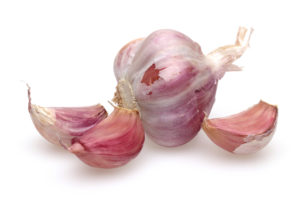 Important components of our volatilome are determined by our diet, an obvious example being garlic. The sulfur compounds found in garlic are metabolized to other, similarly-smelling sulfur compounds, which are excreted in the urine, but also on the breath. Interestingly, in a double-blind study, the daily consumption of fresh garlic by 16 young Czech males resulted in their body odor being rated as more pleasant and more attractive (but less masculine) by 40 young female raters compared to when the same males did not consume garlic. Cotton pads worn in the armpit were used to collect perspiration (Fialova et al 2016).
Important components of our volatilome are determined by our diet, an obvious example being garlic. The sulfur compounds found in garlic are metabolized to other, similarly-smelling sulfur compounds, which are excreted in the urine, but also on the breath. Interestingly, in a double-blind study, the daily consumption of fresh garlic by 16 young Czech males resulted in their body odor being rated as more pleasant and more attractive (but less masculine) by 40 young female raters compared to when the same males did not consume garlic. Cotton pads worn in the armpit were used to collect perspiration (Fialova et al 2016).
 In a similarly-designed study, the body odor of 17 male, Czech students was rated by 30 female students as less pleasant after two weeks on a diet including meat, compared with two weeks on a similar diet with no meat (Havlicek & Lenochova 2006). A study in dogs shows increased isovaleric acid in the gut on diet high in cooked, minced beef compared to just dry food (Herstad et al 2017), suggesting that this compound may be increased in human body odor with a meat diet. Methanethiol (also mentioned in the context of foot odor) is present in many meat and dairy products, along with an amino acid precursor, methionine.
In a similarly-designed study, the body odor of 17 male, Czech students was rated by 30 female students as less pleasant after two weeks on a diet including meat, compared with two weeks on a similar diet with no meat (Havlicek & Lenochova 2006). A study in dogs shows increased isovaleric acid in the gut on diet high in cooked, minced beef compared to just dry food (Herstad et al 2017), suggesting that this compound may be increased in human body odor with a meat diet. Methanethiol (also mentioned in the context of foot odor) is present in many meat and dairy products, along with an amino acid precursor, methionine.
Basically everything we consume (eat, drink, inhale…) has the potential to affect the mix of volatiles that we excrete. Ethanol is another example – it’s not hard to detect alcohol on someone’s breath, and in this instance we are already utilizing electronic breath analysis to quantify it.
Work environment
Our personal fragrant signature may also be a product of our work environment. Whether bakery, auto repair shop, forest, beauty salon, fish market, hospital or mortuary, some work environment odors may stick to us. We will wash them off but they will return when we go back to work, and over time we may permanently acquire a hint of workplace odor.
So, just to be clear, our personal aroma goes through cycles, punctuated by washing. We gradually get more smelly, especially with physical exertion or exposure to strong aromas at work, then we wash, become much less smelly, then the cycle begins again. Assuming we have used fragranced wash products, we also adopt the fragrances from those products, which also gradually dissipate.
Other factors
Whether due to fragrances, work environment, diet or other factors, our personal, signature scent may be recognized by those close to us, without even seeing or hearing us. It is well-established that newborns and their mothers recognize each other through body odor (Croy et al 2019, Marin et al 2015). This may partly explain why, on average, women have a more acute sense of smell than men. Interestingly, this difference tends to disappear after the menopause (Doty & Cameron 2009, Sorokowski et al 2019).
Our volatilome does change as we age. Teenagers, for example, can develop more obvious body odors due to hormonal changes. 31 volatile compounds from the heads of five babies were identified, within a few days of birth. Interestingly, these included menthol (peppermint), benzaldehyde (almond) and methyl heptenone (green citrus) which would impart freshness and fruitiness. Also interesting is that the odor profile of each baby was distinct (Uebi et al 2019).
|
|
The “smell of old age” is thought to be due to altered fatty acid metabolism in the skin, resulting in an increased production of 2-nonenal (Haze 2001). 2-Nonenal is a fatty aldehyde described as “green, soapy, oily, fruity”. It occurs in butter, cheese, melon, coffee and carrot leaf oil. (2-Nonenal should not be confused with the nonanal (aldehyde C-9) listed in Table 3, which smells waxy, fatty, orange peel, and is found in citrus fruit oils.)
Selected odorous compounds
There are a few aromatic compounds of interest in this whole story, either for how they influenced our views of the human volatilome, or because they create links between unexpected spaces. Let’s look at some of them.
Androstenone
Androstenone, has long been classed as a putative human pheromone. A pheromone is a chemical signal that has evolved for communication with other members of the same species – to modify behavior in some sense. The problem with research on humans and androstenone is that none has so far been able to demonstrate biological relevance (Wyatt 2015). It doesn’t help that some people are anosmic to androstenone – they can’t smell it at all.
Androstenone is a pheromone found in the saliva and skin of male pigs, and when inhaled by a female pig that is in heat, it results in the female assuming the mating stance. Early research suggested that it could also be a human male pheromone that would be attractive to females, and the initial excitement lead to some fragrances being marketed as aphrodisiacs. There’s no evidence that these were effective, and subsequent research showed that this was not likely. Human sexual responses are due to all kinds of input, not just one chemical compound.
While it makes sense that humans could possess pheromones, since most species do including most mammals, it’s also possible that, since humans have evolved other means of communication such as speech, pheromones gradually lost their importance over the last few hundred thousand years or more.
Having said that, humans can and often do react to chemosignals. These are sometimes complex mixes of body odor components that may help us in mate choice (determined by genetic compatibility), or help mothers and babies recognize each other. These are, however, not pheromones, since they do not determine the reaction of, for example, all males or all females – they are reactions to individual body odors.
Androstenone is still an interesting molecule. It is a minor constituent of human body odor in both males and females although, as mentioned, it is perceived differently. Some smell sweat or urine, some smell sweet/floral, and some smell nothing. These differences in odor perception have been clearly linked to polymorphisms (sub-types) in the olfactory receptor (OR7D4) that is activated by androstenone (Keller et al 2007). Araneda & Firestein (2004) reported that 2% of the population is truly anosmic to androstenone, while up to 30% are hyposmic.
Olfaction researcher Charles Wysocki, PhD, was one of the people who could not smell androstenone – until he started researching it. He found that, after some weeks of being exposed to it as part of his work, he began to detect an odor, and so decided to find out if the same might be true for others – and it was (Wysocki et al 1989). The results from this study lead to the realization than anosmia could sometimes be overcome, and this in turn lead to what we now know as “smell training” or “olfactory training”.
Bourgeonal
As a synthetic, bourgeonal is used in floral fragrances, notably Lily of the Valley types, and its odor has been described as “fresh, watery, floral, cyclamen, sweet”. Bourgeonal is also found in human sperm, which also contain the olfactory receptor, OR1D2, which is activated by bourgeonal. Sperm respond to the bourgeonal they also produce, by swimming faster, and in the direction of higher bourgeonal concentration (Spehr et al 2003). This was the first time that an olfactory receptor, located in the body, was found to be functional.
Bourgeonal is the only compound to which men have greater olfactory sensitivity than women. In 250 males and 250 females, males could identify bourgeonal at a concentration of 13 ppb, compared to 26 ppb for women, while there was no difference for a structurally similar compound, helional (Olsson & Laska 2010).
A difference in sensitivity has also been observed between fertile males and males with unexplained infertility. Two independent studies show a correlation between lower olfactory sensitivity to bourgeonal and infertility, suggesting that there is lower expression of OR1D2 in infertile males, and that less of these receptors in sperm may explain the infertility (Ottaviano et al 2013, Sinding et al 2013). However this should not be taken to mean that bourgeonal could be used as a therapy for infertility.
Indole
The odor of indole is described as “pungent, musty, floral, fecal”. It is naturally found in feces, and along with skatole, contributes significantly to fecal odor. Indole is also found in several absolutes, notably Champaca, Jasmin sambac and Orange flower, to which it imparts a warm, rich, sensual quality. Indole smells less fecal and more floral in dilution, and it is used in many fragrance types including coffee, chocolate, gardenia, jasmine, lotus, narcissus, tuberose, vanilla and orchid.
As a disease marker, indole is increased in colorectal cancer, and reduced in prostate cancer (Table 3). As an exhaled VOC, it is often increased in halitosis (Natsch & Emter 2020).
Indole is one of nature’s most ubiquitous molecules, in the sense that it forms the basis of several naturally-occurring more complex substances, including serotonin, melatonin, tryptophan, indigo, yohimbine, strychnine and vinblastine. Indole also form the skeleton of dozens of pharmaceuticals, including reserpine (anti-hypertensive), indomethacin (nonsteroidal anti-inflammatory), vinblastine (anti-cancer), sumatriptan (anti-migraine), in addition to recreational drugs such as LSD and psilocybin. (Just to be clear, this does not mean that indole will demonstrate any of the properties of these molecules.)
|
|
Isovaleric acid
This compound is described as “sweaty, cheesy”. It is a constituent of Valerian root oil, cheeses (especially when rancid), and is a key odorant of foot odor, along with butyric and propionic acids. A lower than normal concentration of isovaleric acid is a marker for melanoma (Kwak et al 2013).
Isovaleric acid is produced in the colon by gut bacteria via fermentation of the amino acid leucine. It can also be absorbed from dietary sources. Dairy and beef products, dry-cured meats, and fermented foods are all good sources. It is often present in higher amounts as foods start to decay. Isovaleric acid is particularly common in beers and wines made with Brettanomyces yeasts.
In terms of diagnostics, higher than normal levels are found in the blood and sweat of people with isovaleric acidemia. This is a rare, inherited metabolic disorder that can cause acidosis, vomiting, lethargy and a strong body odor, which usually presents soon after birth or in early childhood. It is caused by a deficiency in the mitochondrial enzyme isovaleryl-CoA dehydrogenase (IVD), which helps break down isovaleric acid. Without enough IVD, isovaleric acid builds up in the blood.
In a fascinating study, Szczesniak et al (2015) found a strong correlation between increased isovaleric acid in feces, bacteria that are high emitters of isovaleric acid, and depression. As we have already seen, isovaleric acid correlates with a high red meat diet, and there is some evidence that a high red meat diet correlates with depression (Mofrad et al 2021).
Volatile markers of disease
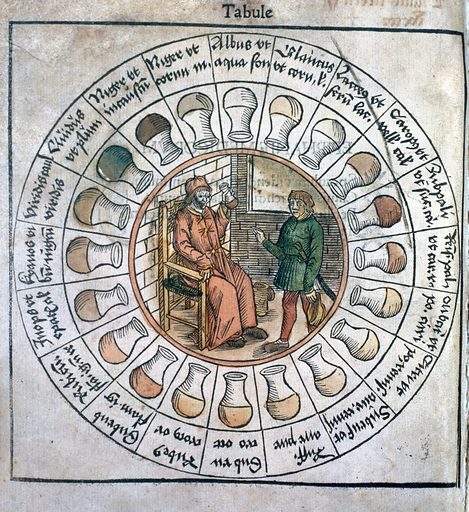
Medieval key to urine diagnosis. image credit: U. Binder, Epiphaniae medicorum, 1506. Wellcome Collection
Disease diagnosis, from ancient times to the Victorian era, was much more sensory than it is today. Smelling the patient, and especially smelling and examining their urine (occasionally tasting it as Hippocrates recommended) was more important in Western medicine than pulse diagnosis. The sweet (honey/maple syrup) odor and taste of diabetic urine dates back to the origin of the name in ancient Greece. Diabetes mellitus can be roughly translated as “to pass honey-tasting water”. This diagnosis of diabetes was formalized in the 17th century by Thomas Willis, an English physician.
If diabetes is not fully controlled, ketosis, or ketoacidosis may develop. In this scenario the body begins to burn fat for energy, which results in a potentially fatal accumulation of ketones in the blood and urine, and a smell of acetone (a fruity, apple-like ketone) on the breath. It’s not surprising that common volatiles in the urine of a healthy person include some evil-smelling compounds such as indole, skatole and dimethyl trisulfide, but I was amazed to find that the most abundant odorant is vanillin, the principal aromatic compound in Vanilla (Wagenstaller & Buettner 2013).
Many disease states are, and have been, associated with unpleasant body odors. That they are often not described in any detail (beyond being “foul”, “offensive”, “obnoxious” etc.) is possibly because our language for describing smells in general is lacking. Most infectious diseases, especially bacterial ones, produce foul odors – infected wounds, bubonic plague, smallpox, diphtheria and so on.
We have a stronger association between (foul) odor and disease than we do between (pleasant) odor and health, which is probably because being aware of a threat is more important for our survival (Bulsing et al 2009). All organisms, however primitive, have mechanisms that react to chemical threats, and in humans this has been called the “chemofensor complex” (Green 2012). If we smell something odorous in a very strong concentration, we may experience this as irritation, which is a warning signal. This is quite notable with some essential oils, such as Thyme and Peppermint.
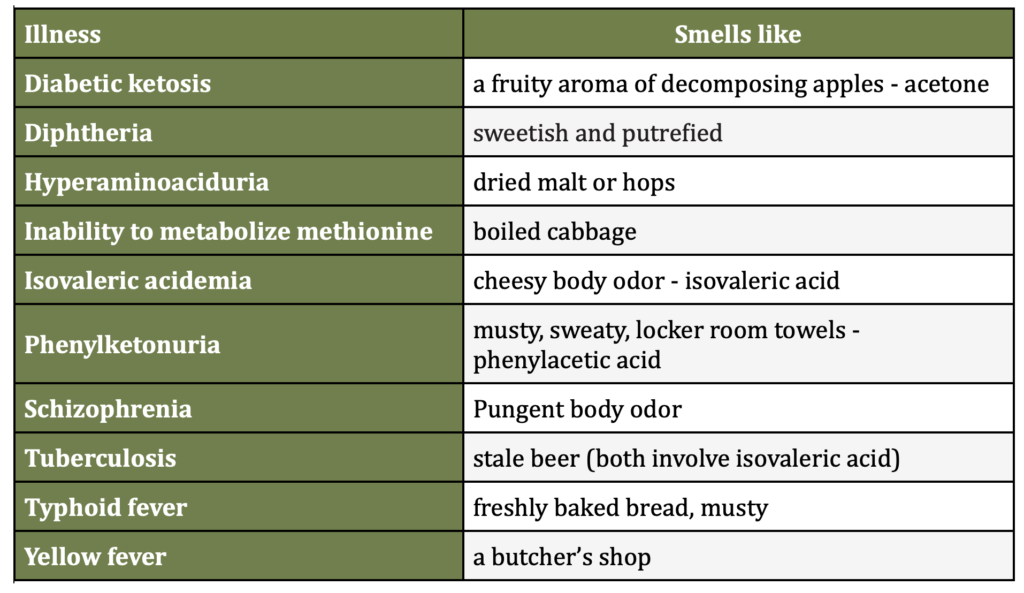
TABLE 2: Some disease states with obvious odiferous correlations (from Penn & Potts 1998; Shirasu & Touhara 2011)
Human “noses”
Doctors, nurses and lab technicians can often identify disease through odor, though smelling patients directly is not the most popular pastime, especially today. The following extract is from Cambau & Pojak (2020).
“Many microorganisms produce characteristic and identifiable odours, and experienced microbiologists can recognize certain microbial genera and even species by simply sniffing culture plates. Candida spp., Clostridioides difficile (formerly Clostridium difficile), Haemophilus spp., Nocardia spp., Proteus spp., Pseudomonas aeruginosa and Streptococcus anginosus group are those most recognizable by smell in the laboratory, and this remains helpful in routine in vitro identification of selected pathogens.
Some experienced clinicians and nurses can also reliably diagnose patients with infectious mononucleosis by typical breath odour, C. difficile and rotaviral diarrhoea by typical stool smell, bladder infection by ammoniacal urine odour, wound infections caused by P. aeruginosa by ‘fruity’ odour, bacterial vaginosis by ‘fishy’ smell, diphtheria by sweet sweat odour and gas gangrene by typical smell.”
You may have heard about “the lady who can smell Parkinson’s”. That lady is Joy Milne, and hers is quite an incredible story that is currently helping thousands of Parkinson’s patients.
It started with her noticing a shift in her husband’s body odor. Suddenly his body had a “nasty yeast smell” that wouldn’t go away even after he took a shower. But it wasn’t until 20 years later, after Les was diagnosed with Parkinson’s, that Joy realized there was more to the smell than just a personal shift. They went to a support group meeting and the room, filled with Parkinson’s disease (PD) patients and their family members, had the same smell she recognized in her husband.
It’s useful to know that Joy Milne is hyperosmic, meaning her sense of smell is unusually acute, so she can detect odors not perceptible to most people. When scientists in Edinburgh, where Joy lives, heard about her reputed ability to detect Parkinson’s disease by smell, she agreed to take part in a pilot study, a T-shirt sampling smell test from 12 individuals – 6 diagnosed with PD, and 6 healthy control subjects. Initially Milne’s result showed 11/12 detection success, however, the control subject she misidentified was later diagnosed with PD, increasing her accuracy to 100% (Morgan 2016).
As we’ve already seen, diagnosing a condition based on its olfactory pattern is not completely new. However, Ms Milne’s example shows that the diagnosis can happen years before any physical symptoms appear. As with any health condition, early detection means better outcomes, increased quality of life, and is also great for the healthcare system as early interventions are less demanding on resources.
Diagnostic dogs
It has been said that dogs can better identify other creatures by odor than humans, but humans can better relate to fine wines and fragrances! Dogs do indeed out-perform humans in terms of smell ability, but this does not mean that humans have a poor sense of smell – we really don’t.
“Sniffer dogs” are routinely trained and used for specific purposes related to their olfactory prowess, such as tracking, and detection of illegal drugs, explosives, currency, live bodies or cadavers. A side-benefit is that dogs are agile and mobile, so can climb into rubble, or a large truck, and move around following their nose. The same task could be carried out using “sniffer robots”, but we don’t yet have the technology to mimic either the agility or the sniffing acuity of a dog.
There are also “medical alert dogs”, which are trained to sense a particular medical crisis before it happens. The timescale can be anything from a few seconds to an hour, and may involve hyperglycemia, hypoglycemia, narcolepsy, epilepsy or migraine (Lippi & Heaney 2020). In a 2017 dissertation, six VOCs were identified on the skin of people immediately after a seizure episode, and three compounds in their saliva. The only compound found in both locations was menthone (Davis 2017). This was the first study of its kind.
In a later study using seven golden doodles trained to alert to either fear or epilepsy, nine unique VOCs were identified, and of these, menthone was considered to be the most indicative single compound. The authors propose that both fear and epilepsy produce the same VOC response, and they hypothesize that menthone might be a new human pheromone, though they concede that there is no known mechanism for biosynthesizing menthone (Maa et al 2021).
Dogs are also being used to detect Covid-19 infections, and long Covid, with some success (Twele et al 2022).
Advantages of using dogs
Agility/mobility
Greater sensitivity to some molecules
Ability to respond to complex mixtures
Disadvantages of using dogs
Olfactory fatigue
Cost of training
Challenges of scaling up
Cannot be “standardized” to produce consistent results
African Giant Pouched Rats
These large and long-living animals (Cricetomys ansorgei) have an unusual olfactory acuity for rodents, possibly due to the size of their olfactory bulb and and cortex relative to their body. This lead to them being trained to sniff out landmines, but their olfactory prowess is now also used to detect disease – specifically tuberculosis – video here
Rats trained by the Tanzania-based NGO Apopo are currently used in several medical centers in Mozambique, Tanzania and Ethiopia. According to Kanaan et al 2021, they are able to assess 140 sputum samples in 40 minutes with very high specificity and sensitivity levels.
eNoses
The development of electronic noses is in its infancy, but there is little doubt that, perhaps within just a few years, we will have mass-produced, reliable, portable and efficient enoses. These will have many uses beyond diagnosis, such as quality control in many industries – but we’re not there yet.
Final thoughts
We’re discovering the importance of olfaction and, as a result, the importance of volatile compounds in the whole ecosystem – which, of course, includes human bodies. Drawing on some age old practices, it’s fascinating to see how modern research embraces the development to find practical applications.
The sheer number of compounds that can be found in the human volatilome is staggering, so this has necessarily been a limited review. I wanted to explore some compounds and connections that I found fascinating, either because of their intersection with aromatherapy, or the implications they have on our approach to health.
Table 3: Selected putative volatile markers of disease states that are also found in essential oils. Click for a full table PDF.
Acknowledgements
Thanks to Akiko Ikeda, Kandace Knudson, Petra Ratajc and Hana Tisserand for their input, edits and advice. Thank you also to Joy Milne, Drupad Trivedi and Perdita Barran for permissions and input.
References
Araneda, R. C., & Firestein, S. (2004). The scents of androstenone in humans. Journal of Physiology, 554(1), 1. https://doi.org/10.1113/jphysiol.2003.057075
Armstrong, J. A. (2007). Urinalysis in western culture: A brief history. Kidney International, 71(5), 384–387. https://doi.org/10.1038/sj.ki.5002057
Bawdon, D., Cox, D. S., Ashford, D., James, A. G., & Thomas, G. H. (2015). Identification of axillary Staphylococcus sp. involved in the production of the malodorous thioalcohol 3-methyl-3-sufanylhexan-1-ol. FEMS Microbiology Letters, 362(16), 1–10. https://doi.org/10.1093/femsle/fnv111
Baydar, H., Saǧdiç, O., Özkan, G., & Karadoǧan, T. (2004). Antibacterial activity and composition of essential oils from Origanum, Thymbra and Satureja species with commercial importance in Turkey. Food Control, 15, 169–172. https://doi.org/10.1016/S0956-7135(03)00028-8
Berna, A. Z., & Odom John, A. R. (2021). Breath Metabolites to Diagnose Infection. Clinical Chemistry, 68(1), 43–51. https://doi.org/10.1093/clinchem/hvab218
Bulsing, P. J., Smeets, M. A. M., & Van den Hout, M. A. (2009). The implicit association between odors and illness. Chemical Senses, 34(2), 111–119. https://doi.org/10.1093/chemse/bjn062
Cambau, E., & Poljak, M. (2020). Sniffing animals as a diagnostic tool in infectious diseases. Clinical Microbiology and Infection, 26(4), 431–435. https://doi.org/10.1016/j.cmi.2019.10.036
Croy, I., Mohr, T., Weidner, K., Hummel, T., & Junge-Hoffmeister, J. (2019). Mother-child bonding is associated with the maternal perception of the child’s body odor. Physiology and Behavior, 198(July 2018), 151–157. https://doi.org/10.1016/j.physbeh.2018.09.014
da Costa, B. R. B., & De Martinis, B. S. (2020). Analysis of urinary VOCs using mass spectrometric methods to diagnose cancer: A review. Clinical Mass Spectrometry, 18, 27–37. https://doi.org/10.1016/j.clinms.2020.10.004
Davis, P. (2017). The investigation of human scent from epileptic patients for the identification of a biomarker for epileptic seizures. ProQuest Dissertations and Theses, 171. https://doi.org/10.25148/etd.FIDC004043
Dima, A. C., Balaban, D. V., & Dima, A. (2021). Diagnostic application of volatile organic compounds as potential biomarkers for detecting digestive neoplasia: A systematic review. Diagnostics, 11(12). https://doi.org/10.3390/diagnostics11122317
Doty, R. L., & Cameron, E. L. (2009). Sex differences and reproductive hormone influences on human odor perception. Molecular and Cellular Biochemistry, 97(2), 213–228. https://doi.org/10.1016/j.physbeh.2009.02.032.SEX
Drabińska, N., Flynn, C., Ratcliffe, N., Belluomo, I., Myridakis, A., Gould, O., …
Costello, B. D. L. (2021). A literature survey of all volatiles from healthy human breath and bodily fluids: The human volatilome. Journal of Breath Research, 15(3). https://doi.org/10.1088/1752-7163/abf1d0
Ferdenzi, C., Razafindrazaka, H., Baldovini, N., Poupon, D., Pierron, D., & Bensafi, M. (2019). Influence of gender and culture on the perception of acidic compounds of human body odor. Physiology and Behavior, 210(April), 112561. https://doi.org/10.1016/j.physbeh.2019.112561
Ferry, B., Ensminger, J. J., Schoon, A., Bobrovskij, Z., Cant, D., Gawkowski, M., … Jezierski, T. (2019). Scent lineups compared across eleven countries: Looking for the future of a controversial forensic technique. Forensic Science International, 302, 109895. https://doi.org/10.1016/j.forsciint.2019.109895
Fialová, J., Roberts, S. C., & Havlíček, J. (2016). Consumption of garlic positively affects hedonic perception of axillary body odour. Appetite, 97, 8–15. https://doi.org/10.1016/j.appet.2015.11.001
Friedman, M. I., Preti, G., Deems, R. O., Friedman, L. S., Munoz, S. J., & Maddrey, W. C. (1994). Limonene in expired lung air of patients with liver disease. Digestive Diseases and Sciences, 39(8), 1672–1676. https://doi.org/10.1007/BF02087774
Fu, W., Xu, L., Yu, Q., Fang, J., Zhao, G., Li, Y., … Chen, X. (2022). Artificial intelligent olfactory system for the diagnosis of Parkinson’s disease. ACS Omega, 7(5), 4001–4010. https://doi.org/10.1021/acsomega.1c05060
Gaida, A., Holz, O., Nell, C., Schuchardt, S., Lavae-Mokhtari, B., Kruse, L., … Hohlfeld, J. M. (2016). A dual center study to compare breath volatile organic compounds from smokers and non-smokers with and without COPD. Journal of Breath Research, 10(2). https://doi.org/10.1088/1752-7155/10/2/026006
Green, B. G. (2012). Chemesthesis and the chemical senses as components of a “chemofensor complex.” Chemical Senses, 37, 201–206. https://doi.org/10.1093/chemse/bjr119
Hara, T., Kyuka, A., & Shimizu, H. (2015). Butane-2,3-dione: the key contributor to axillary and foot odor associated with an acidic note. Chemistry and Biodiversity, 12(2), 248–258. https://doi.org/10.1002/cbdv.201400272
Havlicek, J., & Lenochova, P. (2006). The effect of meat consumption on body odor attractiveness. Chemical Senses, 31(8), 747–752. https://doi.org/10.1093/chemse/bjl017
Haze, S., Gozu, Y., Nakamura, S., Kohno, Y., Sawano, K., Ohta, H., & Yamazaki, K. (2001). 2-Nonenal newly found in human body odor tends to increase with aging. Journal of Investigative Dermatology, 116(4), 520–524. https://doi.org/10.1046/j.0022-202X.2001.01287.x
Herstad, K. M. V., Gajardo, K., Bakke, A. M., Moe, L., Ludvigsen, J., Rudi, K., … Skancke, E. (2017). A diet change from dry food to beef induces reversible changes on the faecal microbiota in healthy, adult client-owned dogs. BMC Veterinary Research, 13(1), 1–13. https://doi.org/10.1186/s12917-017-1073-9
Kačániová, M., Terentjeva, M., Štefániková, J., Žiarovská, J., Savitskaya, T., Grinshpan, D., … Tvrdá, E. (2020). Chemical composition and antimicrobial activity of selected essential oils against staphylococcus spp. isolated from human semen. Antibiotics, 9(11), 1–21. https://doi.org/10.3390/antibiotics9110765
Kanaan, R., Farkas, N., Hegyi, P., Soós, A., Hegyi, D., Németh, K., … Gyöngyi, Z. (2021). Rats sniff out pulmonary tuberculosis from sputum: a diagnostic accuracy meta-analysis. Scientific Reports, 11(1), 1–12. https://doi.org/10.1038/s41598-021-81086-x
Keller, A., Zhuang, H., Chi, Q., Vosshall, L. B., & Matsunami, H. (2007). Genetic variation in a human odorant receptor alters odour perception. Nature, 449(7161), 468–472. https://doi.org/10.1038/nature06162
Kwak, J., Gallagher, M., Ozdener, M. H., Wysocki, C. J., Goldsmith, B. R., Isamah, A., … Preti, G. (2013). Volatile biomarkers from human melanoma cells. Journal of Chromatography B: Analytical Technologies in the Biomedical and Life Sciences, 931, 90–96. https://doi.org/10.1016/j.jchromb.2013.05.007
Lam, T. H., Verzotto, D., Brahma, P., Ng, A. H. Q., Hu, P., Schnell, D., … Nagarajan, N. (2018). Understanding the microbial basis of body odor in pre-pubescent children and teenagers. Microbiome, 6(1), 1–14. https://doi.org/10.1186/s40168-018-0588-z
Li, M., Budding, A. E., van der Lugt-Degen, M., Du-Thumm, L., Vandeven, M., & Fan, A. (2019). The influence of age, gender and race/ethnicity on the composition of the human axillary microbiome. International Journal of Cosmetic Science, 41(4), 371–377. https://doi.org/10.1111/ics.12549
Lippi, G., & Heaney, L. M. (2020). The “olfactory fingerprint”: Can diagnostics be improved by combining canine and digital noses? Clinical Chemistry and Laboratory Medicine, 58(6), 958–967. https://doi.org/10.1515/cclm-2019-1269
Maa, E. H., Arnold, J., & Bush, C. K. (2021). Epilepsy and the smell of fear. Epilepsy and Behavior, 121, 108078. https://doi.org/10.1016/j.yebeh.2021.108078
Marin, M. M., Rapisardi, G., & Tani, F. (2015). Two-day-old newborn infants recognise their mother by her axillary odour. Acta Paediatrica, International Journal of Paediatrics, 104(3), 237–240. https://doi.org/10.1111/apa.12905
Martin, A., Saathoff, M., Kuhn, F., Max, H., Terstegen, L., & Natsch, A. (2010). A functional ABCC11 allele is essential in the biochemical formation of human axillary odor. Journal of Investigative Dermatology, 130(2), 529–540. https://doi.org/10.1038/jid.2009.254
Meadow, J. F., Altrichter, A. E., Bateman, A. C., Stenson, J., Brown, G. Z., Green, J. L., & Bohannan, B. J. M. (2015). Humans differ in their personal microbial cloud. PeerJ, 2015(9), 1–22. https://doi.org/10.7717/peerj.1258
Mofrad, Manije, D., Mozaffari, H., Sheikhi, A., Zamani, B., & Azadbakht, L. (2021). The association of red meat consumption and mental health in women: A cross-sectional study. Complementary Therapies in Medicine, 56(September 2020), 102588. https://doi.org/10.1016/j.ctim.2020.102588
Monedeiro, F., Monedeiro-Milanowski, M., Ratiu, I. A., Brożek, B., Ligor, T., &
Buszewski, B. (2021). Needle trap device-gc-ms for characterization of lung diseases based on breath voc profiles. Molecules, 26(6), 1–19. https://doi.org/10.3390/molecules26061789
Nanashima, N., Kitajima, M., Takamagi, S., Fujioka, M., & Tomisawa, T. (2020). Comparison of chemical composition between Kuromoji (Lindera umbellata) essential oil and hydrosol and determination of the deodorizing effect. Molecules, 25(4195), 1–6.
Natsch, A., & Emter, R. (2020). The specific biochemistry of human axilla odour formation viewed in an evolutionary context. Philosophical Transactions of the Royal Society B: Biological Sciences, 375(1800). https://doi.org/10.1098/rstb.2019.0269
O’Hara, M. E., Fernández Del Río, R., Holt, A., Pemberton, P., Shah, T., Whitehouse, T., & Mayhew, C. A. (2016). Limonene in exhaled breath is elevated in hepatic encephalopathy. Journal of Breath Research, 10(4). https://doi.org/10.1088/1752-7155/10/4/046010
Olsson, P., & Laska, M. (2010). Human male superiority in olfactory sensitivity to the sperm attractant odorant bourgeonal. Chemical Senses, 35(5), 427–432. https://doi.org/10.1093/chemse/bjq030
Orchard, A., Viljoen, A., & Van Vuuren, S. (2018). Antimicrobial essential oil combinations to combat foot odour. Planta Medica, 84(9–10), 662–673. https://doi.org/10.1055/a-0592-8022
Ottaviano, G., Zuccarello, D., Menegazzo, M., Perilli, L., Marioni, G., Frigo, A. C., … Foresta, C. (2013). Human olfactory sensitivity for bourgeonal and male infertility: A preliminary investigation. European Archives of Oto-Rhino-Laryngology, 270(12), 3079–3086. https://doi.org/10.1007/s00405-013-2441-0
Peng, F., Wan, F., Xiong, L., Peng, C., Dai, M., & Chen, J. P. (2014). In vitro and in vivo antibacterial activity of pogostone. Chinese Medical Journal, 127(23), 4001–4005. https://doi.org/10.3760/cma.j.issn.0366-6999.20140494
Penn, D., & Potts, W. K. (1998). Chemical signals and parasite-mediated sexual selection. Trends in Ecology & Evolution Ecology, 13(10), 391–396. https://doi.org/10.1093/oso/9780195131543.003.0022
Phillips, M., Basa-Dalay, V., Blais, J., Bothamley, G., Chaturvedi, A., Modi, K. D., … Udwadia, Z. F. (2012). Point-of-care breath test for biomarkers of active pulmonary tuberculosis. Tuberculosis, 92(4), 314–320. https://doi.org/10.1016/j.tube.2012.04.002
Piqueret, B., Bourachot, B., Leroy, C., Devienne, P., Mechta-Grigoriou, F., d’Ettorre, P., & Sandoz, J. C. (2022). Ants detect cancer cells through volatile organic compounds. IScience, 25(3). https://doi.org/10.1016/j.isci.2022.103959
Poli, D., Goldoni, M., Corradi, M., Acampa, O., Carbognani, P., Internullo, E., … Mutti, A. (2010). Determination of aldehydes in exhaled breath of patients with lung cancer by means of on-fiber-derivatisation SPME-GC/MS. Journal of Chromatography B: Analytical Technologies in the Biomedical and Life Sciences, 878(27), 2643–2651. https://doi.org/10.1016/j.jchromb.2010.01.022
Prokop-Prigge, K. A., Greene, K., Varallo, L., Wysocki, C., & Preti, G. (2016). The effect of ethnicity on human axillary odorant production. Journal of Chemical Ecology, 42(1), 33–39. https://doi.org/10.1007/s10886-015-0657-8.THE
Qin, T., Liu, H., Song, Q., Song, G., Wang, H. Z., Pan, Y. Y., … Chen, Z. D. (2010). The screening of volatile markers for hepatocellular carcinoma. Cancer Epidemiology Biomarkers and Prevention, 19(9), 2247–2253. https://doi.org/10.1158/1055-9965.EPI-10-0302
Ratiu, I. A., Ligor, T., Bocos-Bintintan, V., Mayhew, C. A., & Buszewski, B. (2021). Volatile organic compounds in exhaled breath as fingerprints of lung cancer, asthma and COPD. Journal of Clinical Medicine, 10(1), 1–41. https://doi.org/10.3390/jcm10010032
Schelz, Z., Molnar, J., & Hohmann, J. (2006). Antimicrobial and antiplasmid activities of essential oils. Fitoterapia, 77, 279–285. https://doi.org/10.1016/j.fitote.2006.03.013
Shirasu, M., & Touhara, K. (2011). The scent of disease: Volatile organic compounds of the human body related to disease and disorder. Journal of Biochemistry, 150(3), 257–266. https://doi.org/10.1093/jb/mvr090
Sinclair, E., Walton-Doyle, C., Sarkar, D., Hollywood, K. A., Milne, J., Lim, S. H., … Barran, P. (2021). Validating differential volatilome profiles in Parkinson’s disease. ACS Central Science, 7(2), 300–306. https://doi.org/10.1021/acscentsci.0c01028
Sinding, C., Kemper, E., Spornraft-Ragaller, P., & Hummel, T. (2013). Decreased perception of bourgeonal may be linked to male idiopathic infertility. Chemical Senses, 38(5), 439–445. https://doi.org/10.1093/chemse/bjt009
Soković, M., Glamočlija, J., Marin, P. D., Brkić, D., & Griensven, L. J. L. D. van. (2010). Antibacterial effects of the essential oils of commonly consumed medicinal herbs using an in vitro model. Molecules, 15(11), 7532–7546. https://doi.org/10.3390/molecules15117532
Sorokowski, P., Karwowski, M., Misiak, M., Marczak, M. K., Dziekan, M., Hummel, T., & Sorokowska, A. (2019). Sex differences in human olfaction: A meta-analysis. Frontiers in Psychology, 10(FEB), 1–9. https://doi.org/10.3389/fpsyg.2019.00242
Spehr, M., Gisselmann, G., Poplawski, A., Riffell, J. A., Wetzel, C. H., Zimmer, R. K., & Hatt, H. (2003). Identification of a testicular odorant receptor mediating human sperm chemotaxis. Science, 299(5615), 2054–2058. https://doi.org/10.1126/science.1080376
Szczesniak, O., Hestad, K. A., Hanssen, J. F., & Rudi, K. (2016). Isovaleric acid in stool correlates with human depression. Nutritional Neuroscience, 19(7), 279–283. https://doi.org/10.1179/1476830515Y.0000000007
Trivedi, D. K., Sinclair, E., Xu, Y., Sarkar, D., Walton-Doyle, C., Liscio, C., … Barran, P. (2019). Discovery of Volatile Biomarkers of Parkinson’s Disease from Sebum. ACS Central Science, 5(4), 599–606. https://doi.org/10.1021/acscentsci.8b00879
Troccaz, M., Borchard, G., Vuilleumier, C., Raviot-Derrien, S., Niclass, Y., Beccucci, S., & Starkenmann, C. (2009). Gender-specific differences between the concentrations of nonvolatile (R)/(S)-3-Methyl-3-Sulfanylhexan-1-Ol and (R)/(S)-3-Hydroxy-3-Methyl-Hexanoic acid odor precursors in axillary secretions. Chemical Senses, 34(3), 203–210. https://doi.org/10.1093/chemse/bjn076
Twele, F., ten Hagen, N. A., Meller, S., Schulz, C., Osterhaus, A., Jendrny, P., … Volk, H. A. (2022). Detection of post-COVID-19 patientsu using medical scent detection dogs – a pilot study. Frontiers in Medicine, 9(April 2020). https://doi.org/10.3389/fmed.2022.877259
Uebi, T., Hariyama, T., Suzuki, K., Kanayama, N., Nagata, Y., Ayabe-Kanamura, S., … Ozaki, M. (2019). Sampling, identification and sensory evaluation of odors of a newborn baby’s head and amniotic fluid. Scientific Reports, 9(1), 1–11. https://doi.org/10.1038/s41598-019-49137-6
Wen, Q., Boshier, P., Myridakis, A., Belluomo, I., & Hanna, G. B. (2021). Urinary volatile organic compound analysis for the diagnosis of cancer: A systematic literature review and quality assessment. Metabolites, 11(1), 1–15. https://doi.org/10.3390/metabo11010017
Wyatt, T. D. (2015). The search for human pheromones: The lost decades and the necessity of returning to first principles. Proceedings of the Royal Society B: Biological Sciences, 282(1804). https://doi.org/10.1098/rspb.2014.2994
Wysocki, C. J., Dorries, K. M., & Beachamp, G. K. (1989). Ability to perceive
androstenone can be acquired by ostensibly anosmic people. Proceedings of the National Academy of Sciences of the United States of America, 86(20), 7976–7978. https://doi.org/10.1073/pnas.86.20.7976
Yu, Q., Chen, J., Fu, W., Muhammad, K. G., Li, Y., Liu, W., … Chen, X. (2022). Smartphone-based platforms for clinical detections in lung-cancer-related exhaled breath biomarkers: A review. Biosensors, 12(4). https://doi.org/10.3390/bios12040223


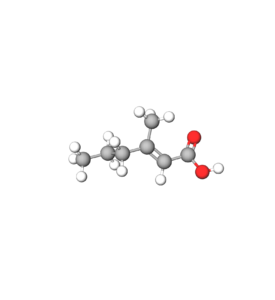
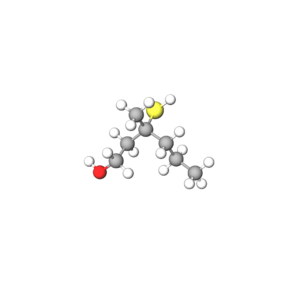
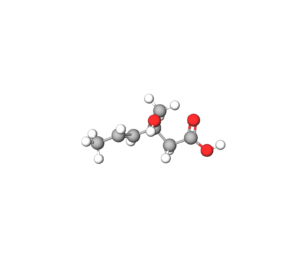
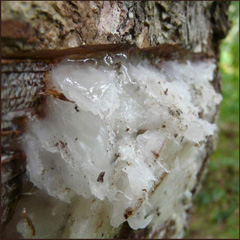

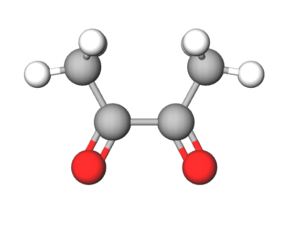


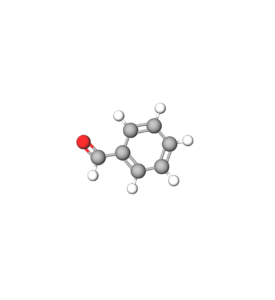
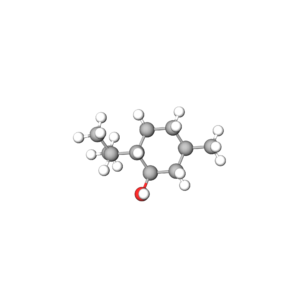
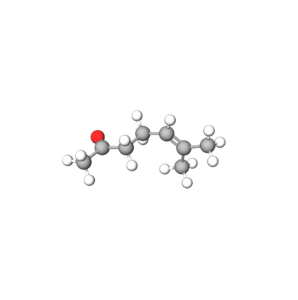
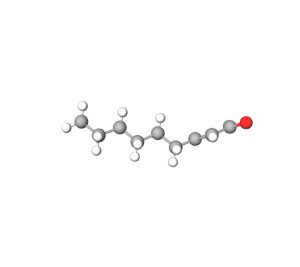
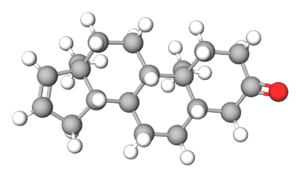
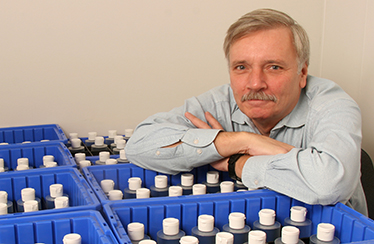
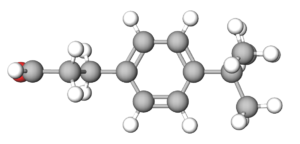
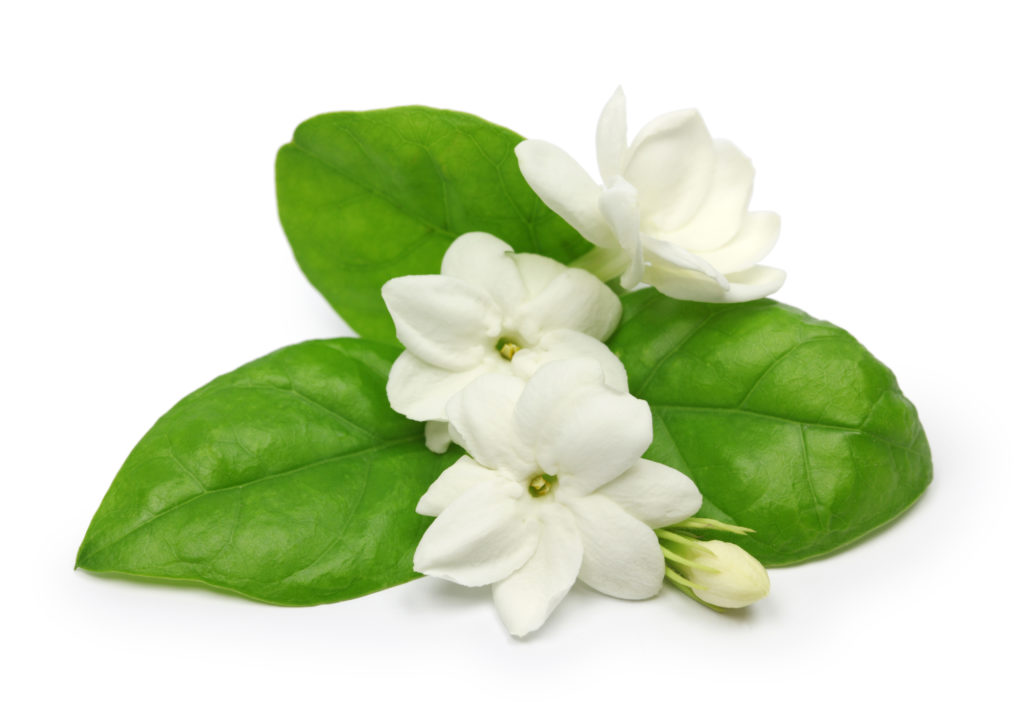
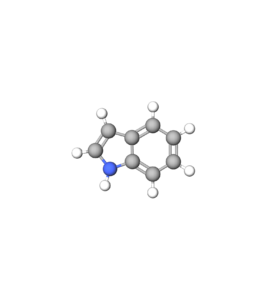
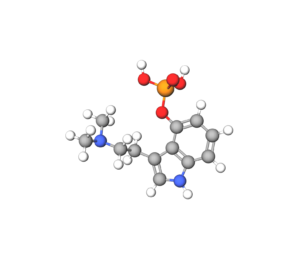
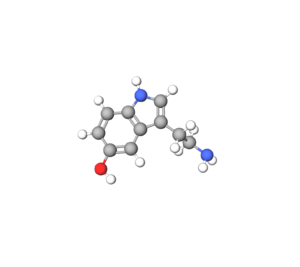
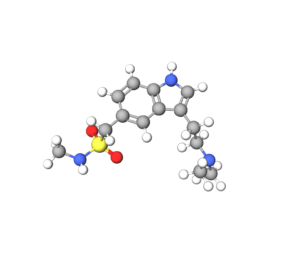
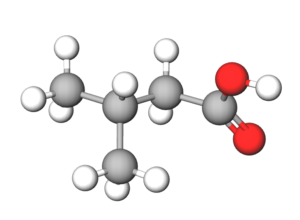
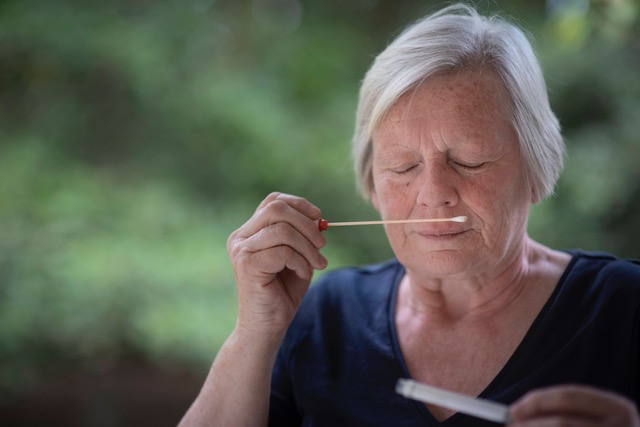
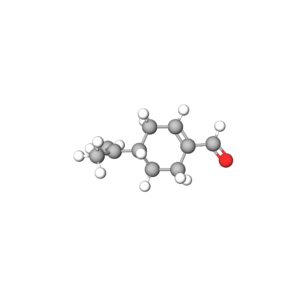
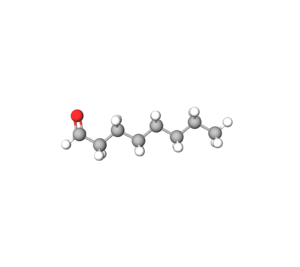
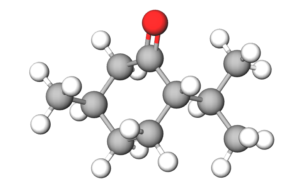
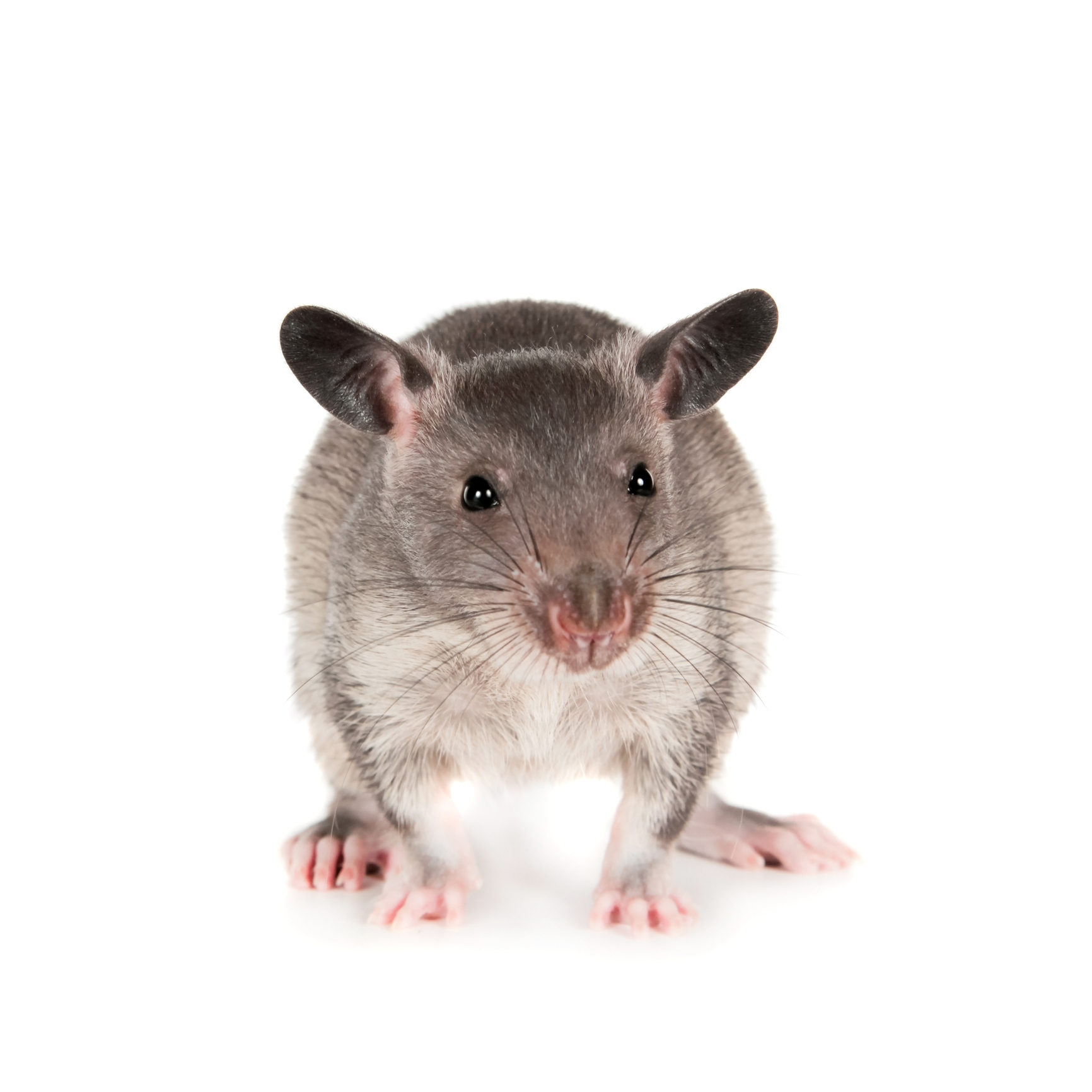
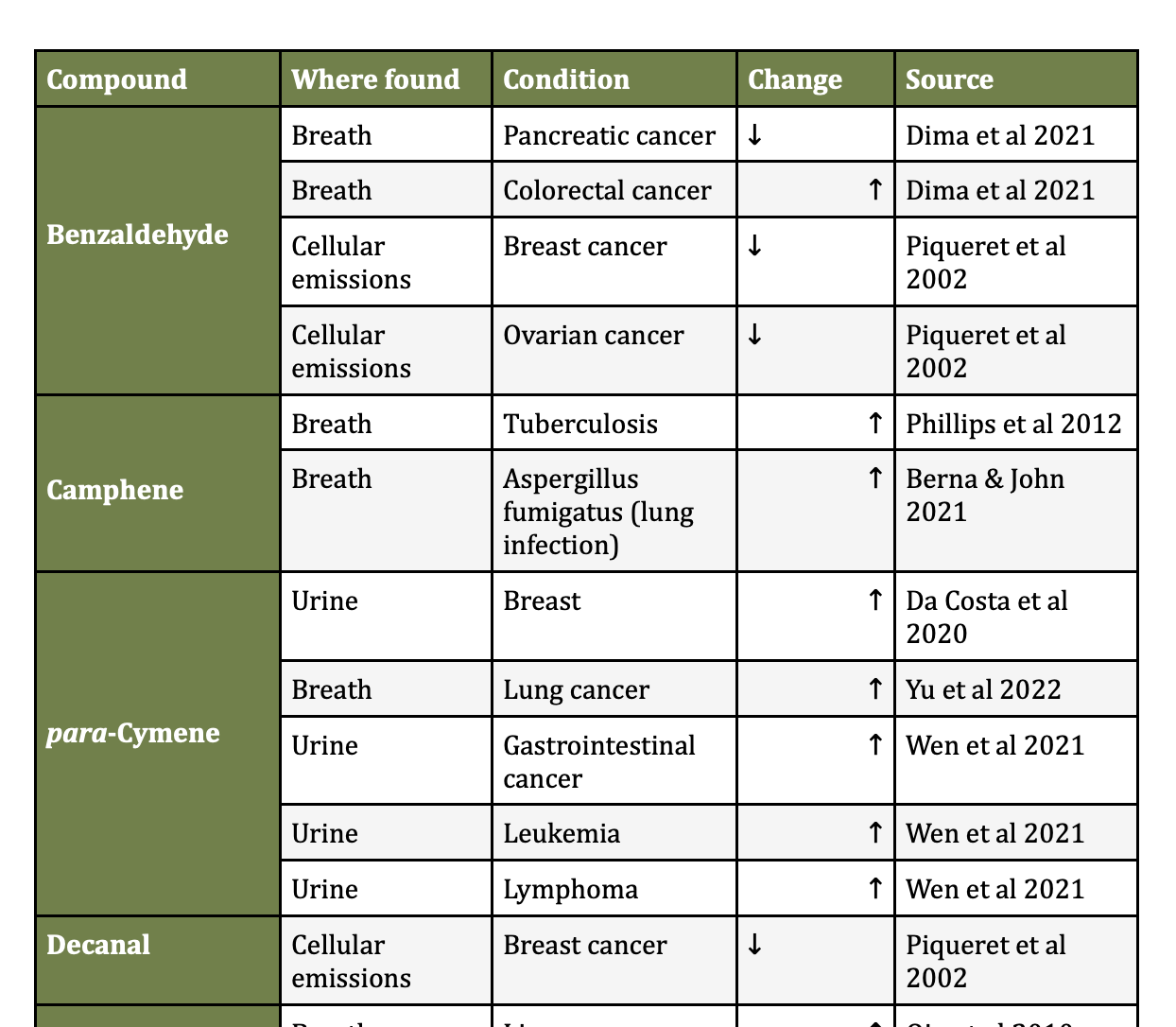

This is one of the coolest articles I’ve read on scent and volatile odors! Clinically relevant and helpful. I love elemi oil, poor man’s frankincense! Thank you for your work, you are appreciated. I am a follower and have used oils for over 15 years in my clinical practice as a ND, functional medicine doc!
Thank you Sarah, though I think Elemi oil is very much more than “poor man’s frankincense”!
i AGREE THAT ELEMI IS MORE THAN THAT.. IT IS AS GOOD. 🙂
Robert, you inspired me to do more research on this oil I love! https://dr-lobisco.com/elemi-essential-oil/, Thank you!
FASCINATING article thank you.i wanted to share that when I was 11 Or 12 I went to an all girls school where there was a strict uniform. I could tell who owned which cardigan very easIly by the smelL. It was very DISTINCT and I thought at the time it was an obvious way to locate the owner!
Very interesting article, so much valuable information.
the definition of specific anosmia made me think about a few experiences I have had where I was the only person that could smell a natural gas leak. Now I wonder if the chemical they add to Natural gas isn’t detectable to everyone because of specific anosmia?
Thanks for the great article Robert.
Hi Faith, you’re absolutely right – a worrying number of people, especially older people, cannot smell the mercaptans added to natural gas to give it an odor.